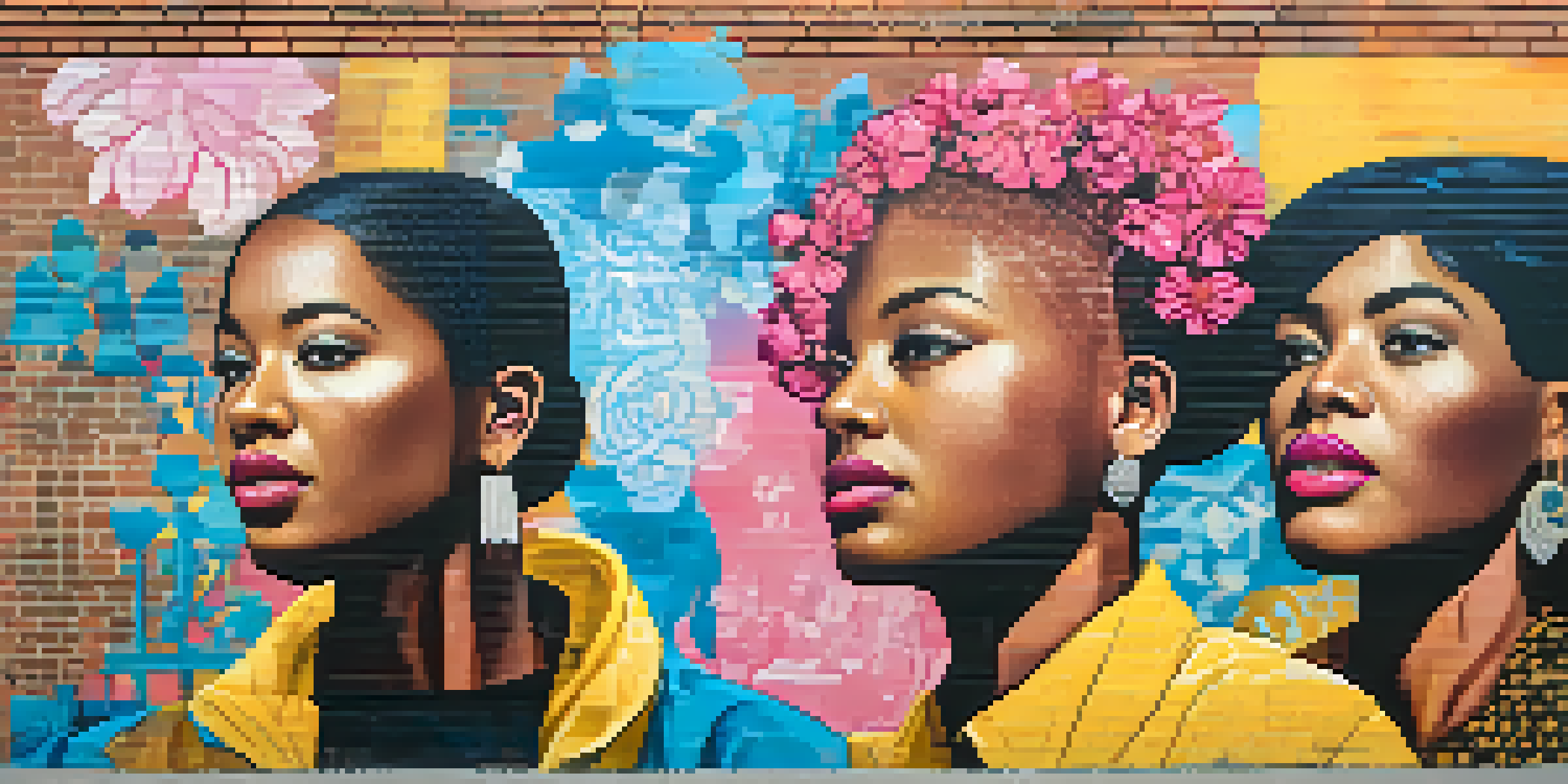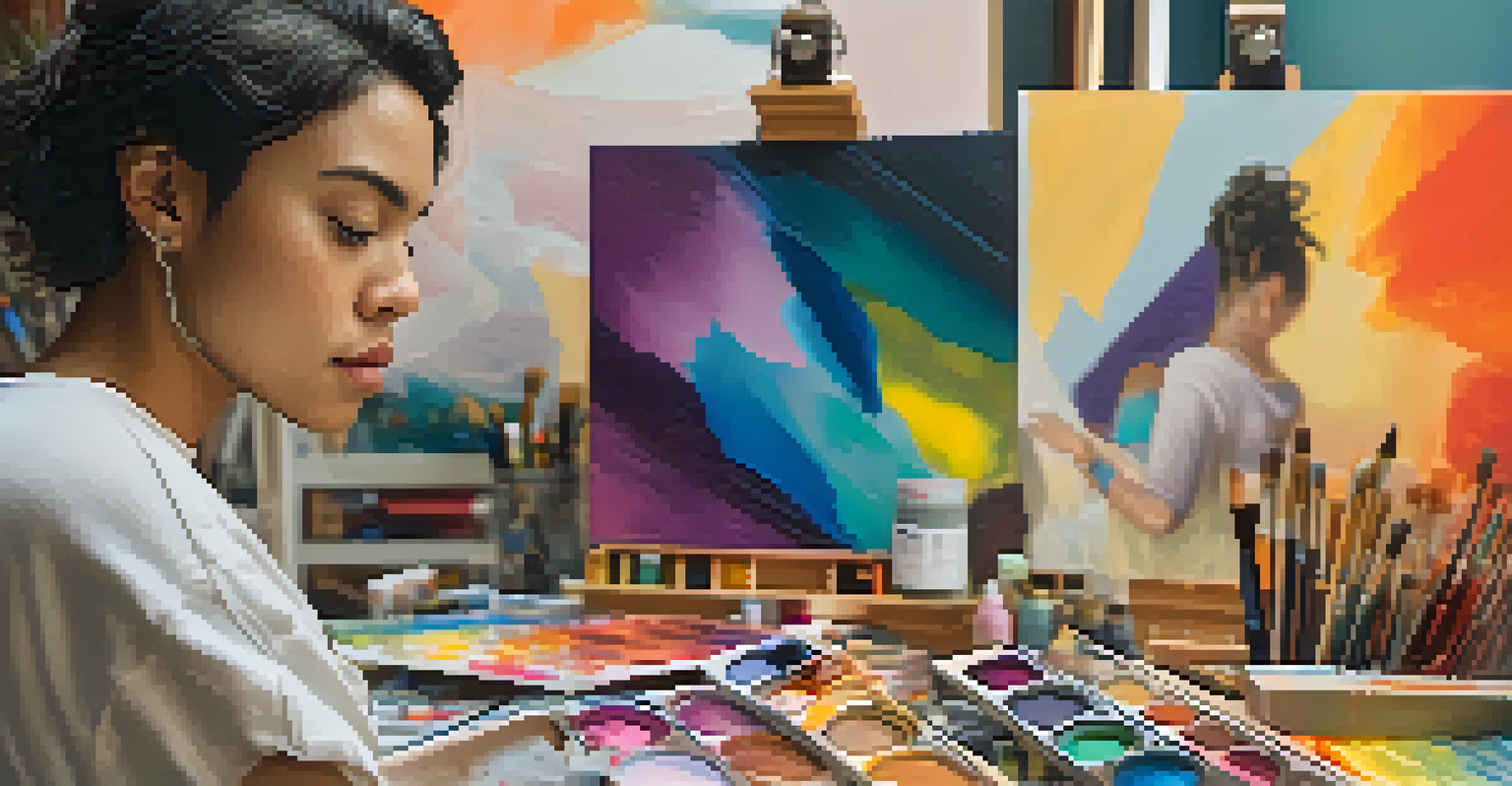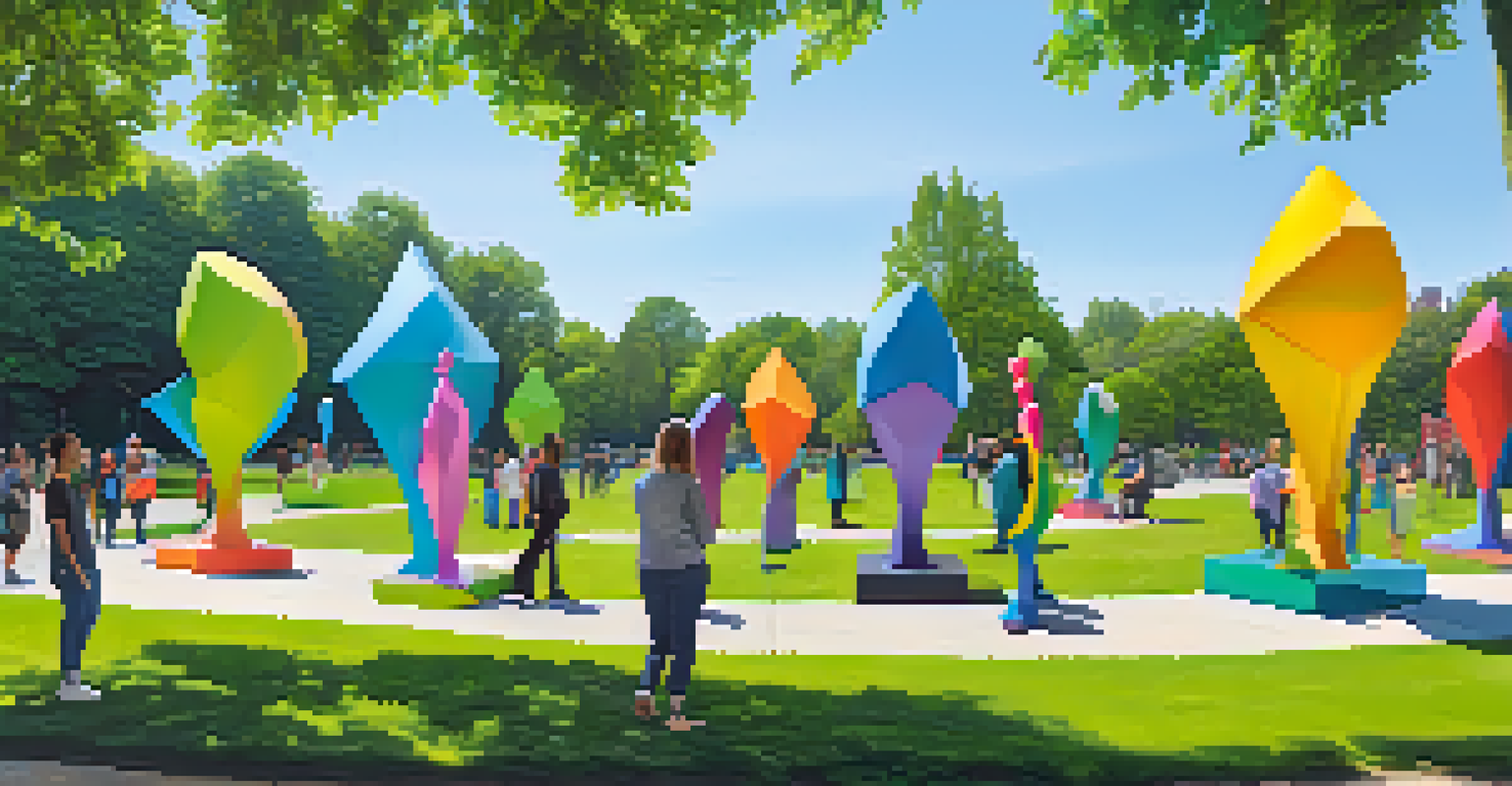Art and Activism: Representing Gender Identity Issues

Understanding Art as a Medium for Activism
Art has long been a powerful tool for social change, and its role in activism cannot be underestimated. Throughout history, artists have used their talents to challenge societal norms and bring awareness to pressing issues. By translating complex ideas into visual forms, art allows for a deeper emotional connection to the struggles faced by marginalized communities.
Art is not a mirror to reflect the world, but a hammer with which to shape it.
When it comes to gender identity, art becomes a canvas where personal stories intersect with broader social narratives. Artists often draw from their own experiences, creating works that resonate not only with their identities but also with the collective fight for recognition and rights. This blend of personal and political makes art an effective vehicle for activism.
Moreover, art encourages dialogue and invites audiences to engage with topics they may not fully understand. This is particularly crucial in discussions about gender identity, as many people still grapple with misconceptions and stereotypes. By presenting these issues through creative expression, artists foster empathy and understanding, paving the way for meaningful conversations.
The Intersection of Gender Identity and Artistic Expression
Gender identity is a multifaceted experience that can be beautifully captured through various art forms. From painting and sculpture to performance and digital media, artists harness their chosen mediums to express their unique journeys and challenge societal expectations. This diversity in expression reflects the complexity of gender identity itself, which is not confined to a single narrative.

For instance, performance art often provides a dynamic space for exploring gender fluidity and non-binary identities. By embodying different personas or challenging traditional gender roles, performers can provoke thought and stimulate discussions about the nature of identity. This immersive experience can leave a lasting impact on audiences, encouraging them to rethink their own perceptions.
Art as a Catalyst for Activism
Art serves as a powerful medium for social change, allowing personal stories to resonate with broader societal issues.
Additionally, visual arts such as photography and painting can document the lived experiences of individuals navigating their gender identities. These artworks serve as a testament to resilience and authenticity, reminding viewers of the beauty in diversity. Through these representations, artists contribute to a richer understanding of gender identity while advocating for acceptance and change.
Art Movements that Embrace Gender Identity Issues
Several art movements have emerged as platforms for discussing gender identity and its complexities. For example, the feminist art movement of the 1970s challenged the male-dominated art world and sought to elevate women's voices and experiences. Artists like Judy Chicago and Miriam Schapiro created works that celebrated femininity and questioned traditional gender norms, laying the groundwork for future explorations of gender identity.
The role of the artist is to make the revolution irresistible.
In more recent years, the LGBTQ+ art movement has gained momentum, providing a space for queer artists to express their identities and advocate for visibility. This movement not only highlights the struggles of LGBTQ+ individuals but also celebrates their contributions to art and culture. Through exhibitions, public installations, and community art projects, these artists foster a sense of belonging and challenge societal stigma.
Moreover, contemporary movements such as intersectional feminism and queer art continue to push boundaries by addressing how race, class, and sexuality intersect with gender identity. These discussions are critical in creating inclusive spaces within the art world, where diverse voices and experiences can be heard and valued. By embracing these complexities, artists can foster a more comprehensive understanding of gender identity.
Turning Personal Narratives into Powerful Art
Personal narratives serve as a profound foundation for artistic expression, particularly in the realm of gender identity. Artists often draw from their own experiences, translating struggles, triumphs, and everyday realities into evocative works. This process not only allows for self-exploration but also invites others to connect with their stories on a deeper level.
Take the example of visual artist Zanele Muholi, whose photography powerfully documents the lives of black LGBTQ+ individuals in South Africa. Through her lens, she captures intimate moments that challenge stereotypes and confront societal prejudice. This personal yet universal approach makes her work relatable and impactful, shedding light on often-overlooked narratives.
Diverse Expressions of Gender Identity
Various art forms capture the complexity of gender identity, providing a platform for underrepresented voices.
By sharing their personal journeys, artists empower others to embrace their identities and find solace in shared experiences. This ripple effect can foster a sense of community and belonging, reinforcing the idea that art is not just about aesthetics but also about connection and understanding. In this way, personal narratives become a catalyst for broader societal change.
How Art Influences Public Perception of Gender Issues
Art has the unique ability to shape public perception and challenge preconceived notions about gender identity. Through compelling visuals and narratives, artists can disrupt stereotypes and highlight the richness of diverse experiences. This transformative power of art can lead to shifts in societal attitudes, paving the way for greater acceptance and understanding.
For instance, when artists depict non-binary or genderqueer identities in mainstream exhibitions, it challenges traditional binaries and encourages viewers to confront their own biases. This representation is crucial, as it normalizes diverse gender expressions and fosters a more inclusive environment. The visibility of these identities in art can ultimately lead to broader acceptance in society.
Moreover, public art installations often serve as accessible platforms for raising awareness about gender issues. When placed in community spaces, these works invite dialogue and engagement, allowing people from different backgrounds to connect with the subject matter. This kind of visibility not only educates but also empowers individuals to advocate for gender equity and justice.
The Role of Social Media in Art and Activism
In today's digital age, social media plays a significant role in amplifying artistic voices and activism, especially concerning gender identity. Platforms like Instagram and TikTok have become powerful tools for artists to share their work, connect with audiences, and spark conversations. This democratization of art allows for diverse perspectives to emerge and reach global audiences.
Through hashtags, artists can create movements that resonate with a wider community, fostering solidarity and support. For example, campaigns like #TransIsBeautiful and #BlackTransLivesMatter utilize art and storytelling to bring attention to pressing issues within the gender identity spectrum. These movements not only elevate marginalized voices but also create a sense of belonging among individuals who may feel isolated.
Social Media Amplifies Artistic Voices
Platforms like Instagram and TikTok empower artists to share their work and foster conversations about gender identity.
Furthermore, social media enables artists to engage directly with their audiences, fostering a two-way dialogue that can enhance understanding and empathy. This interaction allows for real-time feedback and encourages community participation in discussions about gender identity. By harnessing the power of social media, artists can create meaningful impact far beyond traditional gallery spaces.
The Future of Art and Activism in Gender Identity Representation
As society continues to evolve, the intersection of art and activism will remain a vital space for exploring gender identity issues. Emerging artists are likely to push boundaries even further, using innovative techniques and platforms to express their ideas. This evolution will not only enrich the art world but also contribute to ongoing conversations about gender and identity.
Additionally, collaborations between artists, activists, and community organizations will play a crucial role in fostering inclusivity and representation. By working together, these groups can create impactful campaigns and projects that resonate with diverse audiences. This collective effort can bridge gaps and encourage understanding across different communities.

Ultimately, the future of art and activism lies in its ability to inspire change and challenge the status quo. As more artists share their unique perspectives on gender identity, the conversation will continue to expand, paving the way for a more inclusive and equitable society. Art will remain a powerful medium for advocating justice, celebrating diversity, and fostering a sense of belonging for all.